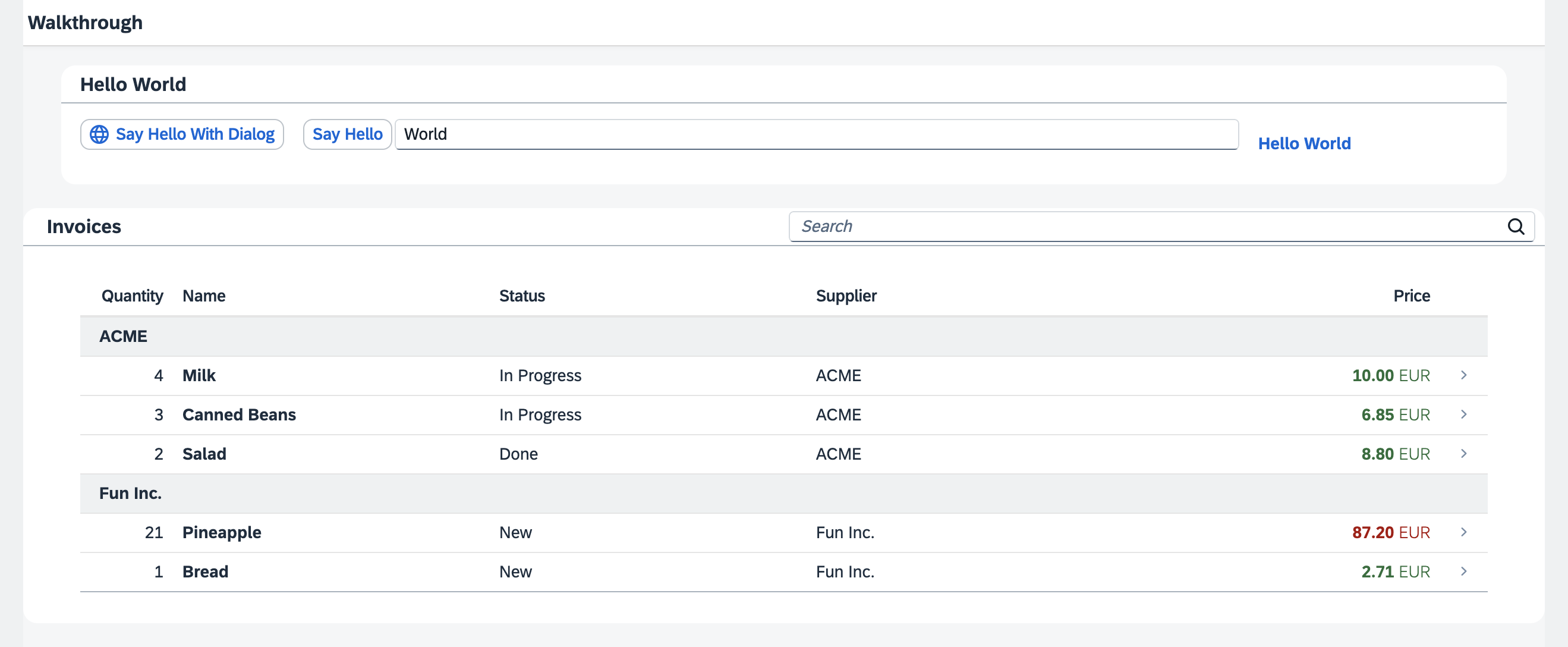Walkthrough Tutorial (JavaScript)
We first introduce you to the basic development paradigms like Model-View-Controller and establish a best-practice structure of our application. We'll do this along the classic example of "Hello World" and start a new app from scratch. Next, we'll introduce the fundamental data binding concepts of SAPUI5 and extend our app to show a list of invoices. We'll continue to add more functionality by adding navigation, extending controls, and making our app responsive. Finally we'll look at the testing features and the built-in support tools of SAPUI5.
Preview

You don't have to do all tutorial steps sequentially, you can also jump directly to any step you want. Just download the code from the previous step and make sure that the application runs as intended; for detailed instructions, see Downloading Code for a Tutorial Step.
You can view and download the samples for all steps in the Demo Kit at Walkthrough.
For more information, see the overview page: Get Started: Setup, Tutorials, and Demo Apps.
In this section:
- Step 1: Hello World!
- Step 2: Bootstrap
- Step 3: Controls
- Step 4: XML Views
- Step 5: Controllers
- Step 6: Modules
- Step 7: JSON Model
- Step 8: Translatable Texts
- Step 9: Component Configuration
- Step 10: Descriptor for Applications
- Step 11: Pages and Panels
- Step 12: Shell Control as Container
- Step 13: Margins and Paddings
- Step 14: Custom CSS and Theme Colors
- Step 15: Nested Views
- Step 16: Dialogs and Fragments
- Step 17: Fragment Callbacks
- Step 18: Icons
- Step 19: Aggregation Binding
- Step 20: Data Types
- Step 21: Expression Binding
- Step 22: Custom Formatters
- Step 23: Filtering
- Step 24: Sorting and Grouping
- Step 25: Remote OData Service
- Step 26: Mock Server Configuration
- Step 27: Unit Test with QUnit
- Step 28: Integration Test with OPA
- Step 29: Debugging Tools
- Step 30: Routing and Navigation
- Step 31: Routing with Parameters
- Step 32: Routing Back and History
- Step 33: Custom Controls
- Step 34: Responsiveness
- Step 35: Device Adaptation
- Step 36: Content Density
- Step 37: Accessibility
- Step 38: Build Your Application